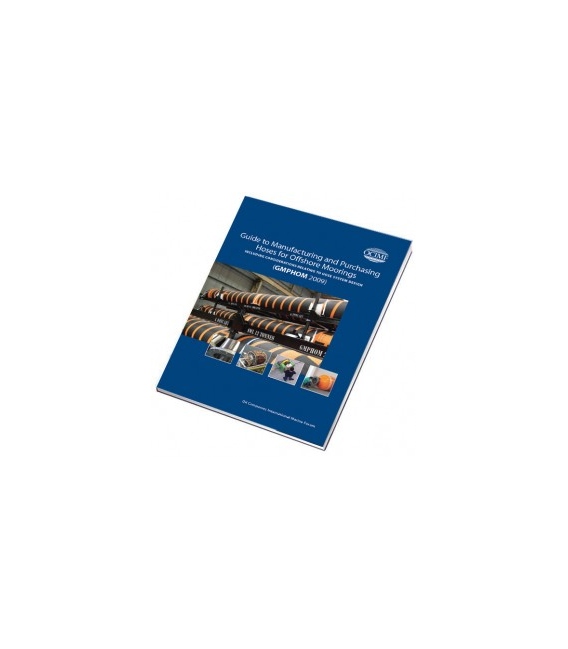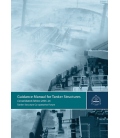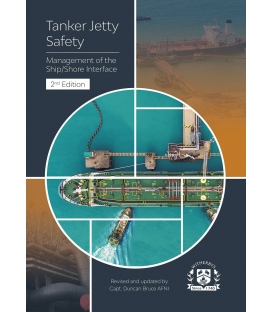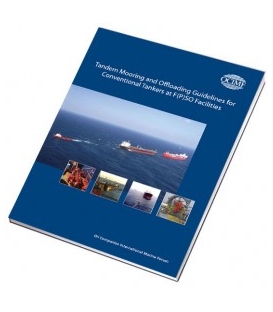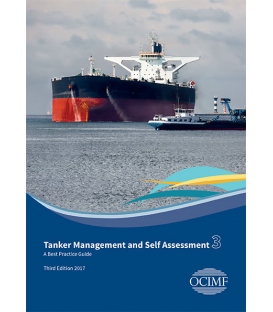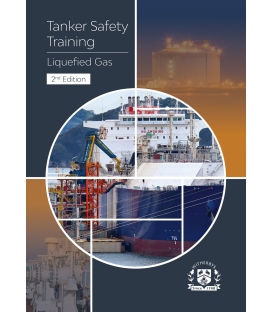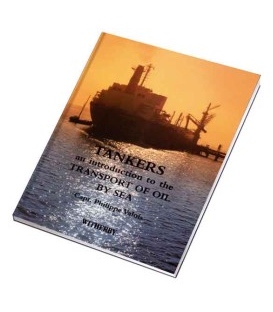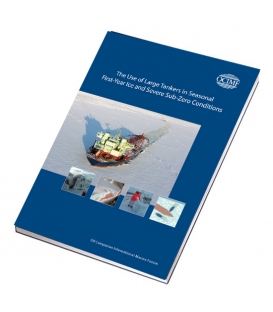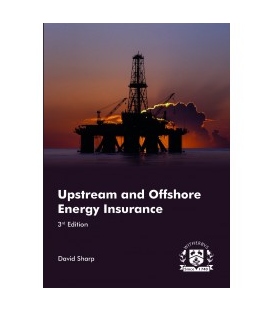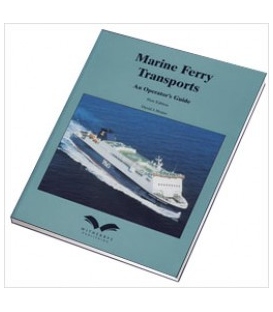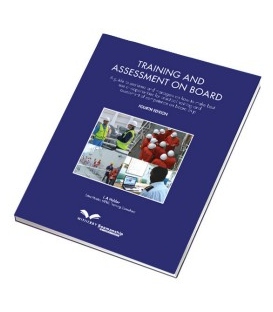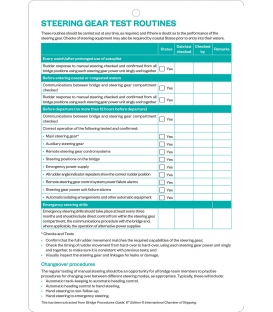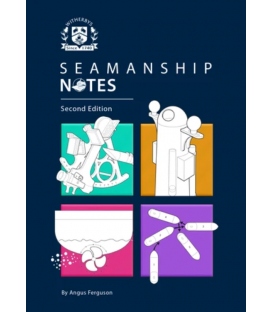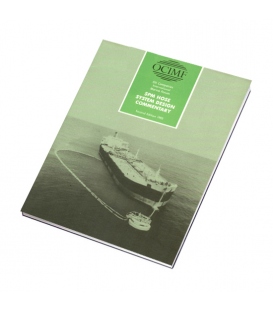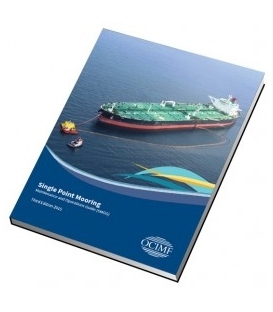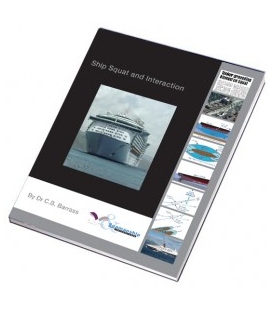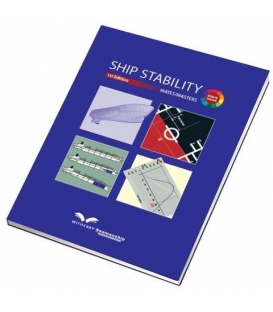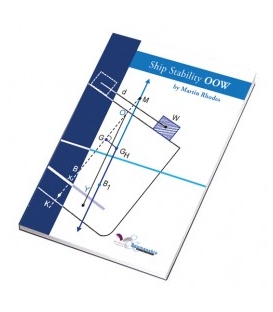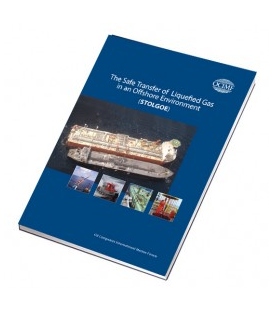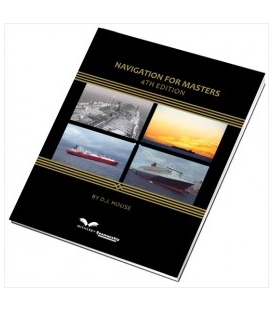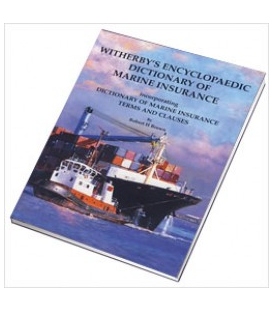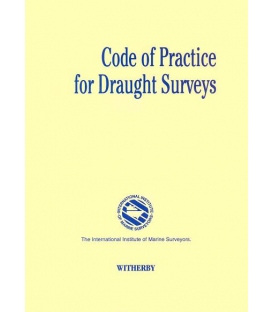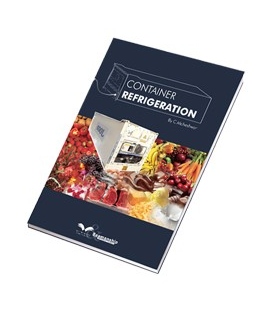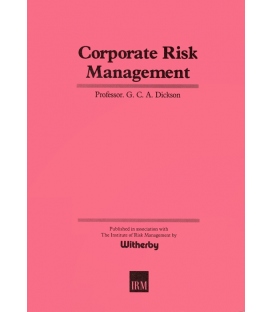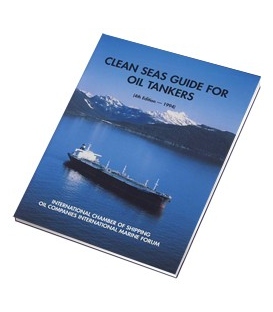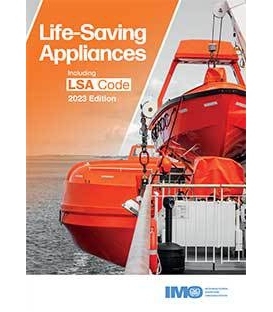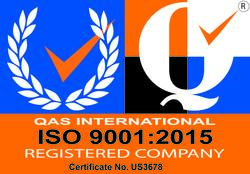

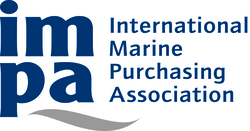
Sign up for our Newsletter
Guide to Manufacturing and Purchasing Hoses for Offshore Moorings (GMPHOM 2009)
Title: Guide to Manufacturing and Purchasing Hoses for Offshore Moorings (GMPHOM 2009).
Subtitle: Including Considerations Relating to Hose System Design
Number of Pages: 90
Product Code: ws1170k
ISBN: ISBN 13: 978-1-905331-88-8 (9781905331888), ISBN 10: 1-905331-88-6 (1905331886)
Author: OCIMF
Binding Format: Hardback
Book Height: 300 mm
Book Width: 210 mm
Book Spine: 10 mm
Guide to Manufacturing and Purchasing Hoses for Offshore Moorings (GMPHOM 2009)
This Guide, supersedes the 4th edition of the ’Guide to Purchasing, Manufacturing and Testing of Loading and Discharge Hoses for Offshore Moorings’, published in 1991, has been prepared by OCIMF with the purpose of providing technical recommendations and guidance to ensure the satisfactory performance of hoses commonly used at offshore moorings.
This Guide, supersedes the 4th edition of the ’Guide to Purchasing, Manufacturing and Testing of Loading and Discharge Hoses for Offshore Moorings’, published in 1991, has been prepared by OCIMF with the purpose of providing technical recommendations and guidance to ensure the satisfactory performance of hoses commonly used at offshore moorings.
Although hose manufacturers may choose to continue to be guided by 4th edition until it is withdrawn in June 2012, this 5th edition reflects a major review and enhancement of the 4th edition for the purpose of providing technical recommendations and guidance to ensure the satisfactory performance of elastomer reinforced, smooth bore, oil suction and discharge hose commonly used at offshore moorings.
The following are among the new or significantly changed topics that are included in this latest edition:
• The guidance for Reeling Hose Systems are addressed for the first time with particular attention being given to the potential for hoses being subjected to crush loading
• a commentary comparing the design and operating guidance of ‘oil’ hose and hose specifically designed for
LPG is included to assist operators when considering hose used in the offshore transfer of LPG
• the Safe Working Loads guidance for hose lifting lugs have been re-assessed based on the weights of Double Carcass Hoses equipped with typical fittings
• the design specification for Double Carcass Hoses has been clarified, together with the guidance for leak detection
• acceptance tests include new guidance for material tests and the process for stiffness testing has been revised
• the circumstances that prompt prototype tests have been clarified and new tests addressing materials, torsion, tensile loading, crushing and lifting lugs have been introduced into the prototype test programme.
This programme now also includes guidance for the dynamic testing of prototype hoses.
Metric units are used for all dimensions including nominal diameter and standard length
Hoses constructed and tested in accordance with recommendations and guidance in this Guide may be stamped ‘GMPHOM 2009’.
GMPHOM 2009 consolidates:
* Guide to Purchasing, Manufacturing and Testing of Loading and Discharge Hoses for Offshore Moorings 4th Ed (Publ 1991)
* SPM Hose System Design Commentary (Publ 1993)
Note. The recommendations and guidance within this Guide shall not be construed as establishing standards or requirements for application to offshore equipment.
OCIMF are not involved with any verification or quality control process relating to the manufacture and/or testing of hoses. OCIMF does not control or regulate in any way the stamping of ‘GMPHOM 2009’ on hoses and therefore, prospective purchasers are recommended to undertake a due diligence process to ensure that the hose specification is as claimed by the Manufacturer/Seller and that the specification is suitable for their intended application.
CONTENTS:
Section 1
Technical Requirements for Commercial Hose
Scope
1.2 Performance Requirements
1.2.1 Rated Working Pressure
1.2.2 Operating Pressure Range
1.2.3 Flow Velocity
1.2.4 Resistance to Temperature, Oil Products and Ageing
1.2.5 Hose Allowable Axial Load
1.3 Length
1.3.1 Standard Hose Length
1.3.2 Tolerances on Lengths
1.3.3 Elongation
1.4 Flexibility
1.4.1 Minimum Bend Radius
1.4.2 Hose with Special Stiffness Requirements
1.4.3 Reeling Hose Systems
1.5 Construction
1.5.1.1 Hose Construction
1.5.1.2 Construction of Lining
1.5.1.3 Construction of Cover
1.5.2 End Fittings
1.5.3 Electrical Continuity
1.6 Submarine Hose
1.6.1 Depth Requirements
1.6.2 Provision of Floats
1.6.3 Weight Tolerances
1.6.4 Marking
1.7 Floating Hose
1.7.1 General
1.7.2 Distribution of Buoyancy
1.7.3 Colour of Cover
1.7.4 Buoyancy Requirements
1.8 Tanker Rail Hose
1.8.1 Buoyancy Material
1.8.2 Flexibility
1.8.3 Weight Tolerances
1.8.4 Reserve Buoyancy
1.8.5 Lifting Lugs
1.8.6 Marking
1.9 Double Carcass Hose
1.9.1 General
1.9.2 Construction
1.9.3 Leak Detection
1.10 Reinforced Hose
1.10.1 Reinforcement
1.10.2 Marking
1.11 Reeling Hose Systems
1.11.1 General
1.11.2 Considerations Applicable to Reeling Systems
1.12 Hoses for Offshore Marine LPG Applications
Section 2
Acceptance Tests, Inspection Procedures and Delivery
2.1 Acceptance Tests
2.1.1 General
2.1.2 Material Tests
2.1.3 Adhesion Tests – Body and Cover
2.1.4 Buoyancy Material Adhesion Tests
2.1.5 Weight Test
2.1.6 Minimum Bend Radius Test
2.1.7 Bending Stiffness Test
2.1.8 Torsion Test
2.1.9 Tensile Test
2.1.10 Hydrostatic Pressure Test
2.1.11 Kerosene Test
2.1.12 Vacuum Test
2.1.13 Electrical Test
2.1.14 Float Hydrostatic Test
2.1.15 Lifting Lug Acceptance Test
2.2 Inspection
2.3 Inspection and Test Certificates
2.4 Manufacturer’s Report
2.5 Marking
2.6 Quality Assurance
2.7 Packing
Section 3
Technical Requirements for Prototype Hose Approval
3.1 Scope
3.1.1 Prototype Test Requirements
3.2 Prototype Hose
3.2.1 Diameter
3.2.2 Length
3.2.3 Rated Working Pressure
3.3 Prototype Document Package
3.4 Required Tests for Prototype Hose
3.4 .1 Material Tests
3.4.2 Nipple Adhesion Tests
3.4.3 Adhesion Tests – Body and Cover
3.4.4 Buoyancy Material Adhesion Tests
3.4.5 Buoyancy Recovery Test
3.4.6 Weight Test
3.4.7 Collar Test
3.4.8 Torsion Test
3.4.9 Tensile Test
3.4.9.1 On Empty Hose
3.4.9.2 On Pressurised Hose
3.4.10 Dynamic Test
3.4.10.1 Bending Load
3.4.10.2 Tensile Load
3.4.10.3 Torsion Load
3.4.11 Minimum Bend Test Radius
3.4.12 Bending Stiffness Test
3.4.13 Hydrostatic Pressure Test
3.4.14 Kerosene Test
3.4.15 Vacuum Test
3.4.16 Electrical Test
3.4.17 Burst Test
3.4.18 Double Carcass Burst Test
3.4.19 Leak Detection System (Double Carcass Hose)
3.4.20 Crush Test
3.4.21 Lifting Lug Test
Section 4
Purchaser’s Inspection Guide
4.1 Scope
v 4.2 General
4.2.1 Purchaser’s Inspection Requirements
4.2.2 Inspection Schedule
4.2.3 Facilities for the Inspector
4.3 Documentation
4.4 Inspection Procedures
4.4.1 General
4.4.2 Material and Pre – Build Checks
4.4.3 In – line Inspection
4.4.4 Adhesion Tests – Body and Buoyancy Material
4.4.5 Hose Handling
4.5 Acceptance Tests
4.5.1 Minimum Bend Radius Test
4.5.2 Bending Stiffness Test
4.5.3 Torsion Test
4.5.4 Tensile Test
4.5.5 Hydrostatic Pressure Test
4.5.6 Kerosene Test
4.5.7 Vacuum Test
4.5.8 Electrical Test
4.5.9 Float Hydrostatic Test
4.5.10 Lifting Lugs
4.6 Test Certificates
4.7 Pre – Shipment Inspection and Packing
Section 5
Considerations Relating to Hose System Design
5.1 Hose System Designs
5.1.1 Catenary Anchor Leg Mooring (CALM)
5.1.2 Single Anchor Leg Mooring (SALM)
5.1.3 Multi Buoy Mooring (MBM)
5.1.4 Tandem Mooring
5.2 Floating Hose String Lengths
5.2.1 Catenary Anchor Leg Mooring (CALM)
5.2.2 Multi Buoy Mooring (MBM)
5.2.3 Tandem Mooring
5.3 Use of Electrically Discontinuous Hoses
5.3.1 Manifold Connection
5.3.2 Cathodic Protection Systems
5.4 Marine Breakaway Couplings
5.4.1 Factors to Consider
5.4.2 Guidance on Positioning of MBC
5.4.3 Use of MBCs in Reeling Hose Systems
5.5 Recommended Actions after a Surge Event
5.6 Hose Lifting Weights

